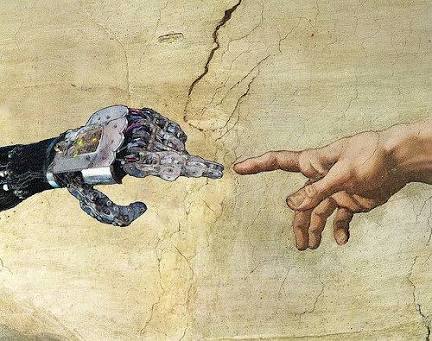You all heard about nanotechnology know a days the use and requirements of nanotech increase day by day . It more important utilisation in healthcare
The most dangerous deases of modern time is cancer there are many treatment of cancer like disease but after all this it causes thousand of death each year because medicine can't get to each cancer cells this can be solved by nanobots
Nanobots is also known as nanorobotics
Nanorobotics is an emerging technology field creating machines or robots whose components are at or near the scale of a nanometre (10−9 meters).More specifically, nanorobotics (as opposed to microrobotics) refers to the nanotechnology engineering discipline of designing and building nanorobots, with devices ranging in size from 0.1–10 micrometres and constructed of nanoscale or molecular components.[4][5] The terms nanobot, nanoid, nanite, nanomachine, or nanomite have also been used to describe such devices currently under research and development.
Nanomachines are largely in the research and development phase, but some primitive molecular machines and nanomotors have been tested. An example is a sensor having a switch approximately 1.5 nanometers across, able to count specific molecules in a chemical sample. The first useful applications of nanomachines may be in nanomedicine. For example, biological machines could be used to identify and destroy cancer cells. Another potential application is the detection of toxic chemicals, and the measurement of their concentrations, in the environment. Rice University has demonstrated a single-molecule car developed by a chemical process and including Buckminsterfullerenes (buckyballs) for wheels. It is actuated by controlling the environmental temperature and by positioning a scanning tunneling microscope tip.
Another definition is a robot that allows precise interactions with nanoscale objects, or can manipulate with nanoscale resolution. Such devices are more related to microscopy or scanning probe microscopy, instead of the description of nanorobots as molecular machine. Using the microscopy definition, even a large apparatus such as an atomic force microscope can be considered a nanorobotic instrument when configured to perform nanomanipulation. For this viewpoint, macroscale robots or microrobots that can move with nanoscale precision can also be considered nanorobots.
Bio chip
The joint use of nanoelectronics, photolithography, and new biomaterials provides a possible approach to manufacturing nanorobots for common medical uses, such as surgical instrumentation, diagnosis, and drug delivery.So, practical nanorobots should be integrated as nanoelectronics devices, which will allow tele-operation and advanced capabilities for medical instrumentation
Nubots
A nucleic acid robot (nubot) is an organic molecular machine at the nanoscale. DNA structure can provide means to assemble 2D and 3D nanomechanical devices. DNA based machines can be activated using small molecules, proteins and other molecules of DNA. Biological circuit gates based on DNA materials have been engineered as molecular machines to allow in-vitro drug delivery for targeted health problems. Such material based systems would work most closely to smart biomaterial drug system delivery, while not allowing precise in vivo teleoperation of such engineered prototypes
Nano medicine
Potential uses for nanorobotics in medicine include early diagnosis and targeted drug-delivery for cancer, biomedical instrumentation, surgery,pharmacokinetics, monitoring of diabetes, and health care.
In such plans, future medical nanotechnology is expected to employ nanorobots injected into the patient to perform work at a cellular level. Such nanorobots intended for use in medicine should be non-replicating, as replication would needlessly increase device complexity, reduce reliability, and interfere with the medical mission.
I hope one day these nanobots are in every one body and save as from many kind of deadly dieses and increase our life expectancy.












